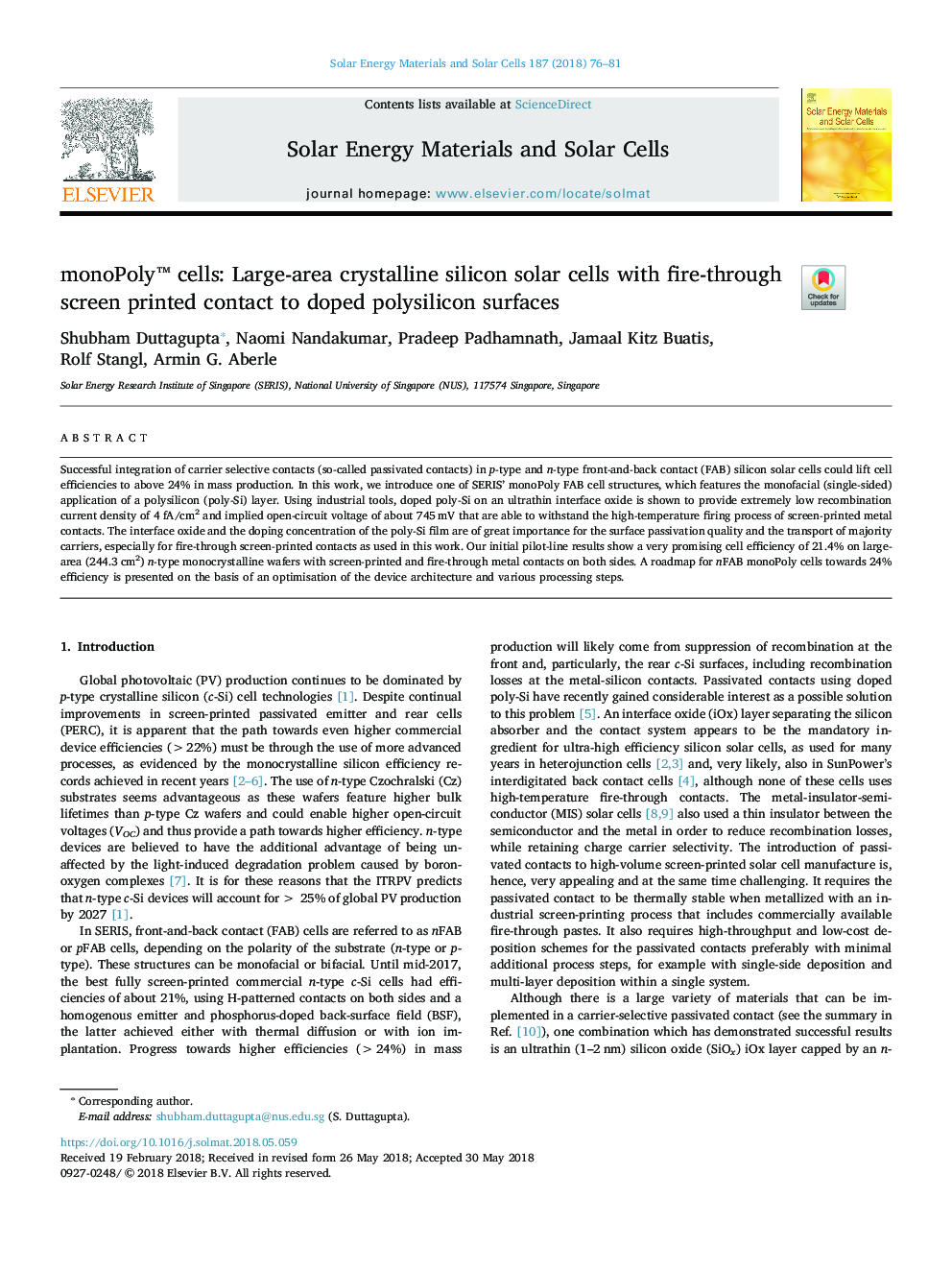| Article ID | Journal | Published Year | Pages | File Type |
|---|---|---|---|---|
| 6533794 | Solar Energy Materials and Solar Cells | 2018 | 6 Pages |
Abstract
Successful integration of carrier selective contacts (so-called passivated contacts) in p-type and n-type front-and-back contact (FAB) silicon solar cells could lift cell efficiencies to above 24% in mass production. In this work, we introduce one of SERIS' monoPoly FAB cell structures, which features the monofacial (single-sided) application of a polysilicon (poly-Si) layer. Using industrial tools, doped poly-Si on an ultrathin interface oxide is shown to provide extremely low recombination current density of 4 fA/cm2 and implied open-circuit voltage of about 745â¯mV that are able to withstand the high-temperature firing process of screen-printed metal contacts. The interface oxide and the doping concentration of the poly-Si film are of great importance for the surface passivation quality and the transport of majority carriers, especially for fire-through screen-printed contacts as used in this work. Our initial pilot-line results show a very promising cell efficiency of 21.4% on large-area (244.3â¯cm2) n-type monocrystalline wafers with screen-printed and fire-through metal contacts on both sides. A roadmap for nFAB monoPoly cells towards 24% efficiency is presented on the basis of an optimisation of the device architecture and various processing steps.
Related Topics
Physical Sciences and Engineering
Chemical Engineering
Catalysis
Authors
Shubham Duttagupta, Naomi Nandakumar, Pradeep Padhamnath, Jamaal Kitz Buatis, Rolf Stangl, Armin G. Aberle,
